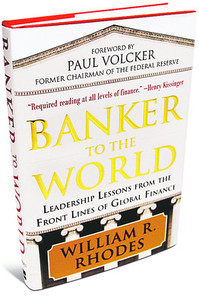 Elizabeth Holmes, former CEO of Theranos. (Apparently it takes more than a black turtleneck to be Steve Jobs.) Source of photo: online version of the NYT article quoted and cited below.
Elizabeth Holmes, former CEO of Theranos. (Apparently it takes more than a black turtleneck to be Steve Jobs.) Source of photo: online version of the NYT article quoted and cited below.
(p. 13) In 2015, Vice President Joe Biden visited the Newark, Calif., laboratory of a hot new start-up making medical devices: Theranos. Biden saw rows of impressive-looking equipment — the company’s supposedly game-changing device for testing blood — and offered glowing praise for “the laboratory of the future.”
The lab was a fake. The devices Biden saw weren’t close to being workable; they had been staged for the visit.
Biden was not the only one conned. In Theranos’s brief, Icarus-like existence as a Silicon Valley darling, marquee investors including Robert Kraft, Betsy DeVos and Carlos Slim shelled out $900 million. The company was the subject of adoring media profiles; it attracted a who’s who of retired politicos to its board, among them George Shultz and Henry Kissinger. It wowed an associate dean at Stanford; it persuaded Safeway and Walgreens to spend millions of dollars to set up clinics to showcase Theranos’s vaunted revolutionary technology.
. . .
Even for a private company like Theranos, disclosure is the bedrock of American capitalism — the “disinfectant” that allows investors to gauge a company’s prospects. Based on Carreyrou’s dogged reporting, not even Enron lied so freely.
. . .
Holmes . . . pleaded with Rupert Murdoch — the power behind The Wall Street Journal and, as it happened, her biggest investor — to kill the story. It’s a good moment in American journalism when Murdoch says he’ll leave it to the editors.
. . .
Some of the directors displayed a fawning devotion to Holmes — in effect becoming cheerleaders rather than overseers. Shultz helped his grandson land a job; when the kid reported back that the place was rotten, Grandpa didn’t believe him. There is a larger moral here: The people in the trenches know best. The V.I.P. directors were nectar for investor bees, but they had no relevant expertise.
For the full review, see:
Roger Lowenstein. “This Will Only Hurt a Little.” The New York Times Book Review (Sunday, June 17, 2018): 13.
(Note: ellipses added.)
(Note: the online version of the review has the date May [sic] 21, 2018, and has the title “How One Company Scammed Silicon Valley. And How It Got Caught.”)
The book under review, is:
Carreyrou, John. Bad Blood: Secrets and Lies in a Silicon Valley Startup. New York: Alfred A. Knopf, 2018.



